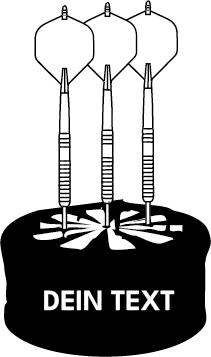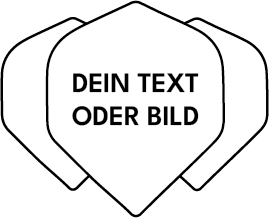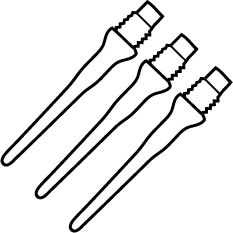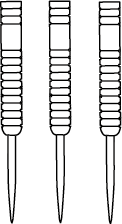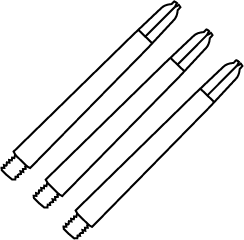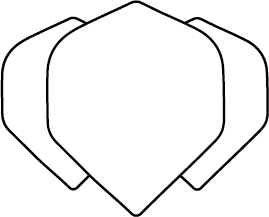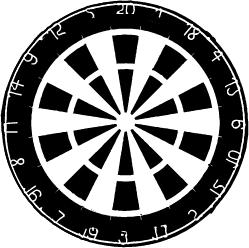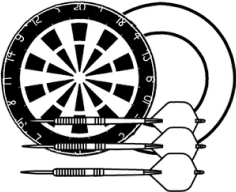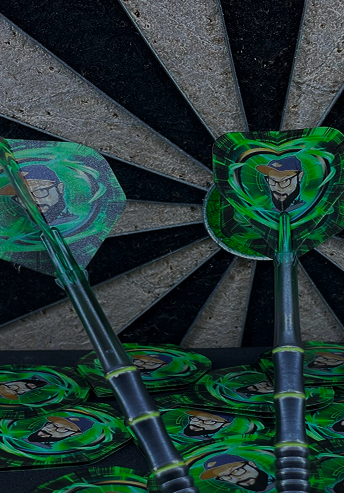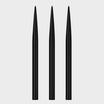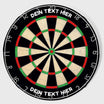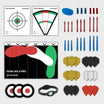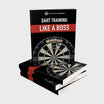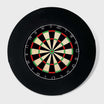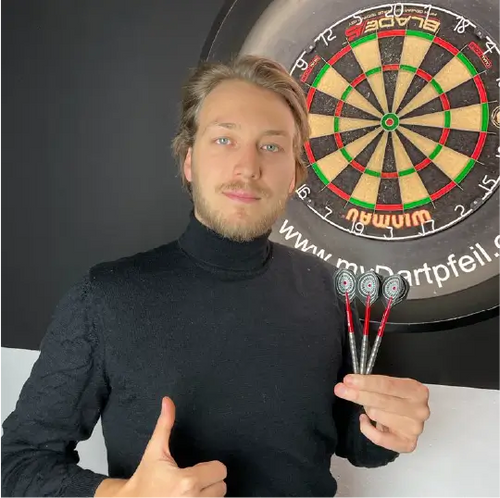The game 121 is one of the most popular training games for professionals and amateur players . However, there are many amateur players who aren't really familiar with the game yet, but have only heard the term somewhere.
In this blog post, we'll explain what this training game is all about and why the 121 dart game is so popular. With 121, you don't just practice the triple 20, but cover all the aspects needed to win a game under pressure .
In our opinion, 121 is the best method to test with friends whether you are able to hold your own in pressure situations at the oche .
Dart game 121 – what is it and what are the basic rules
The dart game 121 has established itself as an effective training game among ambitious amateur players who have been playing for a while. The rules are basically relatively easy to understand.
In 121 , two players compete against each other and start with a remaining score of 121. The players must reduce these 121 points to 0 in a total of three shots, i.e. with 9 darts .
If a player manages to bring 121 to 0 with 9 darts or less, they move up one point . So, in the next round, you'll try to check 122 points.
As in a regular game, the checkout occurs via one of the doubles. However, if a player fails to check the 122 points, he or she will fall back to a remaining score of 121 in the next round. However, 121 always represents the lowest "starting finish" throughout the game.
An additional rule that many players frequently use in the regular game is the "safehouse." This means that if you manage to check your remaining score with just three darts as a high finish , you can't fall back from your newly achieved finish in the next round.
At the end of this article we have put together a few calculation examples for you.

What variations of the 121 Darts Game are there?
But in the 121 training game, as with almost all other dart games, there are certain deviations, adaptations and variations .
The basic rules are now clear: 9 darts, 121 points remaining . If you check, you move up; if you don't, you drop back one point, up to 121.
Variant 1: Dart game 121
Another variation of the game, especially suitable for beginners, is the option of just playing your way up first. Especially as a darts newbie, you'll find that playing the " 9-darter " at 121 can be quite a challenge .
It'll take some time to get to, say, 130 points. But see for yourself.
Option 2: Rule like a pro
With the 121 darts game, you can of course also try to make the game a bit more challenging . Admittedly, this is the most difficult of all the variations. In this variation, you only have three darts to complete a leg and bring the 121 points down to zero.
If you manage to do this, you'll move up 10 points instead of just one. So, if you check 121 with three darts, your next finish will be 131. However, from this point on, you'll drop back one point if you don't check your finish with three darts.
Variant 3: Vary as desired
The third variation allows you to play the game in a completely free way. Of course, you can also play the finish with 6 darts instead of 9 or 3. A cool variation where the rules adapt dynamically is the following:
- You start at 121 and have (up to 130 points) 3 darts to check
- If you check it, you already have 6 darts for your finish from the 131
- If you manage to play your way up to 150, you now have 9 darts for the finish
To advance your way up the rankings, you'll be forced to score 121 or more as a high finish at least once. This will help you learn how to handle pressure in darts over time.
What exactly is the focus of Dart Training 121?
Now the question arises: what exactly are you training with Dart Training 121? The answer is actually quite simple: you train the entire board !
Ultimately, the focus is, of course, on checking. And depending on how you roll from 121 down, you'll often have a different double rest. This way, you'll get to know the different double squares better and, by setting, practice rolling squares you don't normally play.
This is precisely why 121 training is so popular with experienced players. They create a pressure situation during 121 play and learn to check when it matters.
The bottom three numbers you try to check already show how variable the game is.
- 121 points remaining: here you normally start on the 20 field
- 122 points remaining: here you normally start on the 18-field
- 123 points remaining: here you normally start on the 19-field
And depending on how many points you score with the first shot, you have completely different ways to check the points in the end .

A calculation example for the dart game 121
Finally, we'd like to use a calculation example to illustrate how the 121 dart game can work. As always, you start with 121 points. Here, we'll assume the basic version , where you have 9 darts for each finish.
- Now you hit 20, 17, 20 with the first three arrows
- There remains a remaining score of 64
- You can check these via the 16 (16, 16, D16)
This example already shows how important it is to calculate early on . Because you have two ways to check 121 with three darts. Your game is designed for this.
An example of the 121 Checkout
Way 1: T20, T11 ,D14 -> if you only hit the T20: T20, 11, Bull
Route 2: 20, T17, Bull
In this example, I hit the 20 with the first dart. So I still have 101 points remaining. I could theoretically check these with two darts by hitting the T17 and the bull's eye.
But if I only hit the easy 17 here, I have to calculate to ensure a simple finish on the next shot. Therefore, the last dart is again on the 20 to leave 64 points (or, in the case of a T20), 24 remaining.

Ready to take your skills to the next level? Discover our exclusive secrets and proven methods to optimize your game:
-
JDC Challenge » Get valuable tips, techniques, and strategies to take your game to the next level! Click here to learn more
- The art of tournament planning: Learn how to set up professional dart tournaments in our guide.
- Learn how to improve your average with the Dart Triple and score points against your competition. Click in now and get started successfully!
Sofern nicht anders angegeben, unterliegt das im Beitrag gezeigte Bildmaterial mit Bezug zu Dartspielern und verwandten Themen dem Copyright der Professional Darts Corporation (© PDC).

